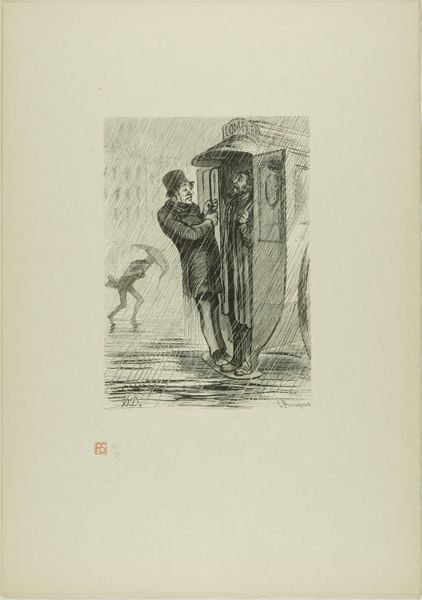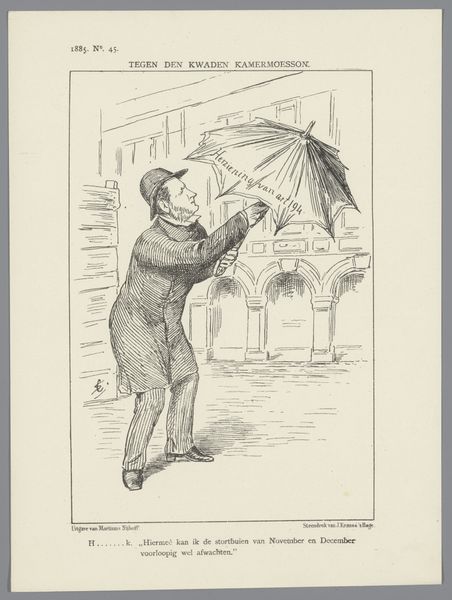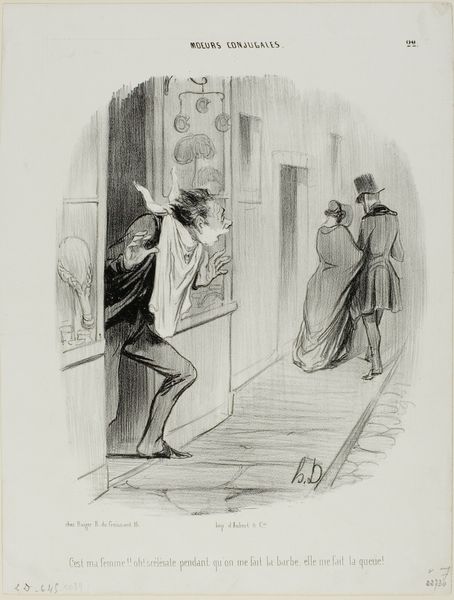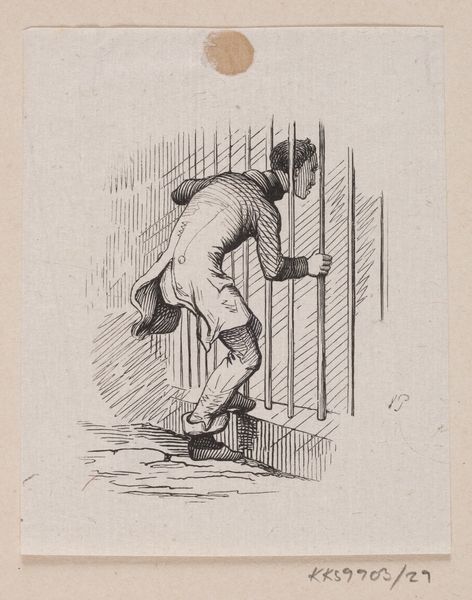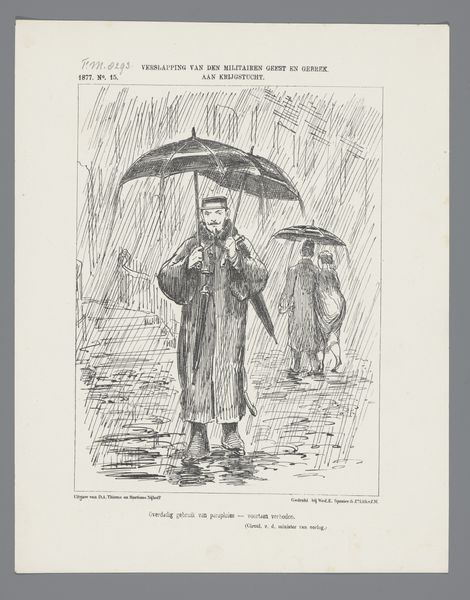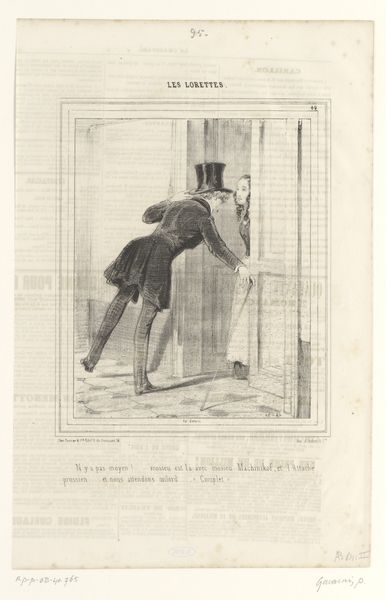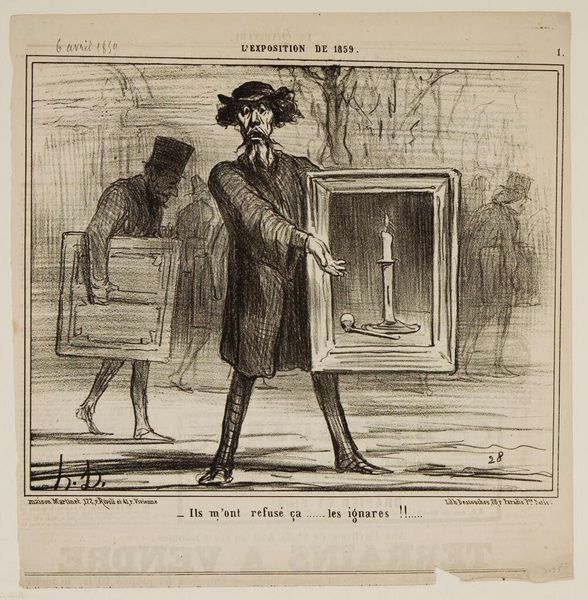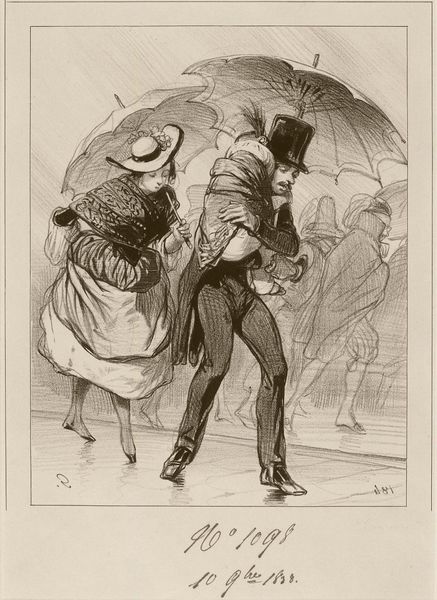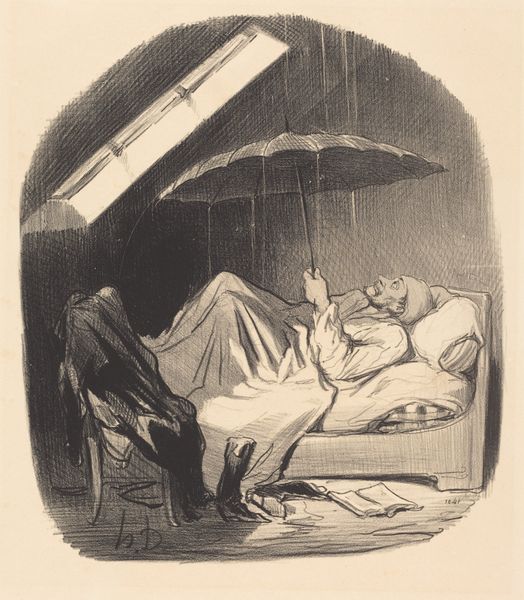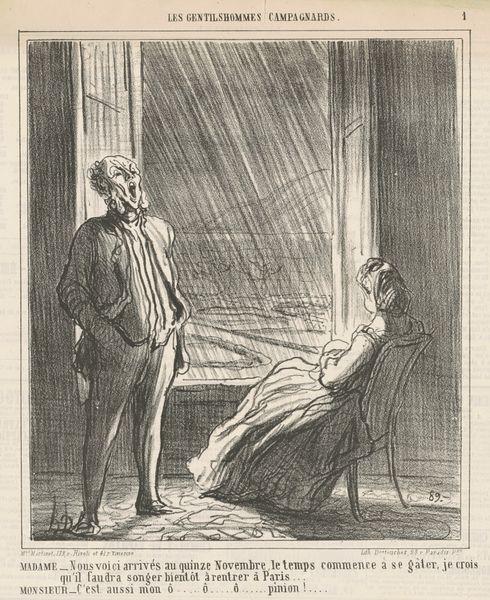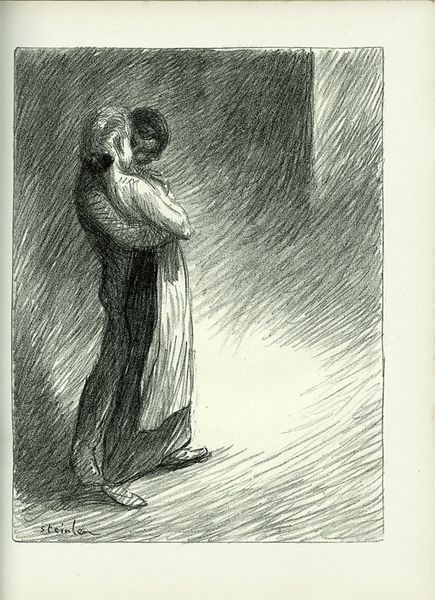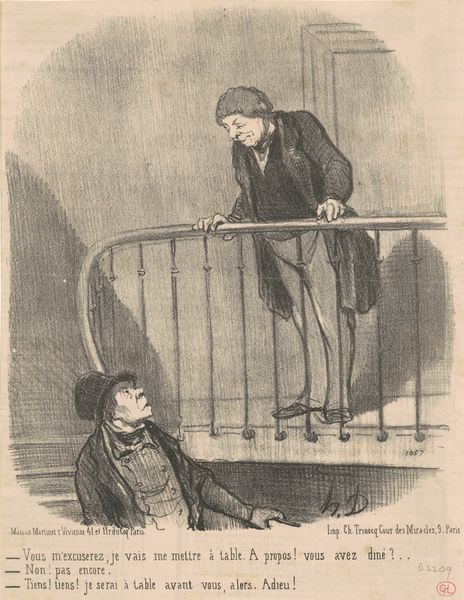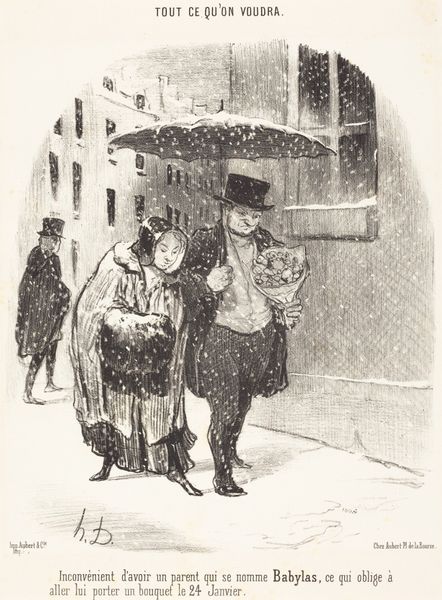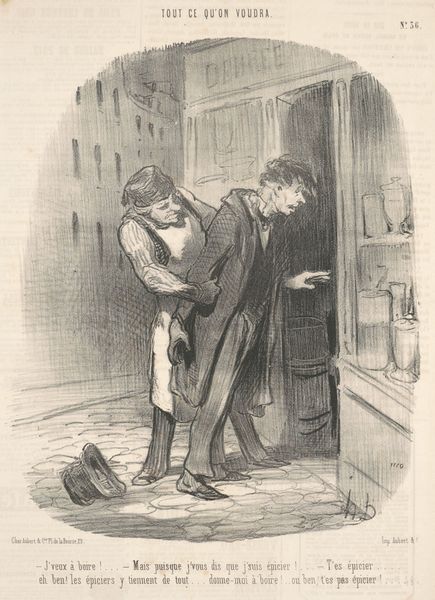
lithograph, print
#
portrait
#
lithograph
# print
#
caricature
#
group-portraits
#
cityscape
#
genre-painting
#
realism
Copyright: Public domain
Curator: Let's discuss this print by Honoré Daumier, titled "Street Scene. Two Characters in the Back of a Car Service." It's a lithograph depicting a rainy cityscape with figures seeking shelter. What are your first impressions? Editor: Dreary! Immediately, I'm drawn to the materiality of the scene itself. The rain seems palpable, a visual representation of the city's dampness seeping into everything. You can almost feel the chill. Curator: Absolutely. Daumier's realism here offers a social commentary. We can situate this artwork within the broader context of urbanization and class disparity, particularly as it relates to accessibility and mobility in 19th century France. The figures cramped in the carriage point to larger inequalities, doesn’t it? Editor: Exactly. It raises questions about the means of transportation available and how such resources were distributed in a city like Paris at the time. Also the print itself. The relatively accessible nature of lithography allowed this artwork to disseminate and circulate widely amongst people who are not usually in engagement of fine art, isn’t it? Curator: A vital point. Considering his other works, it connects with his broader focus on Parisian life. We see Daumier again interrogating bourgeois values. The carriage then becomes a potent symbol—access for some, exclusion for others. What about the technique interests you? Editor: Look at the way the lithographic crayon defines the lines of the carriage and figures, emphasizing their solidity against the watery backdrop. It draws my attention to how things are manufactured or how they come into shape through a process that mimics everyday occurrences. The labour is transparent in Daumier's hand. Curator: Agreed. It's that tension between process and social critique that resonates. For me, it raises essential questions of who occupies urban space and at what cost. The piece speaks poignantly about resilience amidst struggle, a narrative pertinent then and now. Editor: Ultimately, looking closely at the method by which this image was printed, it reveals the very circumstances of art's making in 19th century urban centers. In many ways, this print allows us to discuss labour behind images and things. Curator: Precisely. Thinking of Daumier and social commentary from feminist perspective gives an interesting point as well: is the very cityscape designed with equality in mind? Food for thought. Editor: Yes. And with that point in mind, this opens up possibilities to see prints differently.
Comments
No comments
Be the first to comment and join the conversation on the ultimate creative platform.
